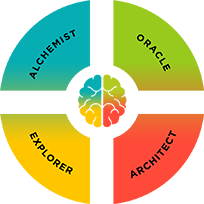Total Reading Time: 6 minutes.
I’m going on a blog publishing sabbatical. Before you get sad and feel like you just stepped in a puddle and have wet sock (worst thing ever), allow me to share some reasons why you may want to do the same. I’ll also share my own motivations for doing this toward the end of the article.
I once learned from a brilliant man—Eben Pagan, creator of my favorite program for work effectiveness Wake Up Productive—that it’s critical to be deliberate with our time. Eben is the archetype of the modern-day internet entrepreneur. He has made tens of millions of dollars selling information products, and built a virtual business and team that spans the globe.
He does things that might seem silly to some, like having a dedicated person in his life he calls the meter fairy, who makes sure he always has enough quarters in his car glove compartment to pay for street parking. One of the biggest business-related lessons I’ve learned is how to focus on only the most important tasks.
I’ve been using the method below for a couple years, but have only recently begun to understand its true power. We must be very self-aware of how we spend our time. There is a simple formula we can use to help monitor our activities.
Increase Productivity with Simple Time-Management
All of your time can be divided into these two chunks:
1. High-dollar or high-lifetime-value activities
This is where our priority should be. The most important aspect is what tasks we’re actually working on. High-dollar value tasks are the ones that generate you the most revenue/sales. High-lifetime value tasks are creative activities to help toward your pursuit of grander, long-term goals—and can also lead to more income.
Are you creating a new report in Google Analytics or a spreadsheet for your website? Are you calling your email list hosting company to troubleshoot a problem? These are not high-value tasks. Are you putting together a document for your client? Are you attending a conference in your field to get an education and meet like-minded people? There you go—these are high-value tasks. Do more of this, and cut the rest.
2. R3: Rest, relaxation, and rejuvenation
Yes—the rest of your time should be spent—resting. “This is blasphemy, Arman! You’re promoting laziness.” I understand this goes against standard logic for most of us. It’s easy to believe that if you’re not busy hustling 24/7 it means you’re lazy. This attitude and approach work for some people, like Gary Vaynerchuk, who has created a movement around hustling.
In order for you to be effective at what you do (the high-value tasks), you need to keep your mind and body in an optimal state. Taking care of yourself and disconnecting from work is critical. Spending a little time by yourself isn’t a bad idea either, my experiment from an entire year of solitude changed my life. Relaxation is also a time to build the creative muscle.
Meditating, or simply slowing down the mind, can do magical things for your creativity.
I value presence over productivity, and first learned about this from the incredible Maria Popova. The method above does promote productivity, but at its core it promotes a presence and effectiveness that other complicated productivity solutions can’t offer. Alan Watts also spoke of this often and highlighted how our society lives to work, his famous talk on Work vs. Play explains this beautifully.
What to Do with All the Other Tasks
The question of how to cut the rest is an entirely different one, but here’s a quick primer:
- First work on saying no to yourself. Then get better at saying no to other people without being rude.
- Now work on identifying the tasks you should not be doing (the ones not in line with your craft and strengths as a solopreneur).
- And finally, outsource these tasks to a virtual assistant or intern. I love Fancy Hands and use them daily (here’s a full review of the service).
Why You Should Take a Sabbatical
Now you understand the foundation for how you can approach your work. As always, experiment with this and see if it works for you. Now how do sabbaticals (not the type your professor takes, but a self-imposed break) tie into all this? At times we may find ourselves working too many projects. It’s easy to get caught up saying yes to exciting opportunities, which means it’s no longer possible to dedicate enough time to the high-value tasks.
A sabbatical is a way to say—that’s enough. A sabbatical can be a complete disconnect. Or simply taking a break from a specific business, project, or task in your work. In my case, I’m taking a publishing sabbatical, which means I’m not planning on publishing any content directly on the site, but of course, I will continue communicating with my readers and sharing insights through my email newsletter.
By choosing to go on sabbatical you can disconnect from a task (or everything else) to focus on a bigger opportunity. Or, it can help to regenerate your creativity and enthusiasm for the work. James Clear talks about taking a sabbatical from his writing around twice a year—something I think every writer should consider.
In my case, I’m working on multiple huge projects (the biggest of my life so far), which is both high-dollar and high-lifetime-value work. It would be irresponsible of me to take time away from this, especially since it aligns directly with my grander vision and helps me better serve my readers (you) much better.
Sometimes we just have to go all in. By turning off the mind when it comes to other tasks, we can be fully immersed in a new world and spend more time carefully crafting the new project. That’s what I’m doing right now, and if it resonates with you, I recommend you consider it too. Be specific about what really matters. Focus on a single brand promise and message, then deliver on it with laser focus.
It wasn’t easy to make this decision, in fact, I was initially feeling guilty just considering it. In the end, I asked myself a simple question: would my readers rather receive a few new articles, or will they gain more from the multiple projects I’m working on that I’m certain will provide 10–100X more value in the long-term? Easy answer.
How long will I go on this publishing sabbatical for? The current plan is around 60 days. How much time will I save? You might be wondering how blogging takes away from this—after all—how long does it really take? A 1,000–3,000-word post (the typical length of my articles), takes anywhere from two to eight hours to research and write, and even longer to edit and publish. But I actually spend even more time promoting my articles to reach new audiences than on the creation process—another 10–20 hours a week.
Conclusion
So—think about your own life, your projects, and your goals. Are you avoiding working on the highest-value work? Would a project-specific sabbatical help? If so, start re-structuring your daily plan right now. Keep it to a maximum of 2–3 tasks per day, and focus all your energy and effort around that.
Sometimes all we need is a jolt to realize we’ve been avoiding the real thing all along. Or perhaps you’ve been unintentionally procrastinating, feeling disconnected from your craft, or simply too busy to make an impact. Either way, a sabbatical could be just the thing you need.
To learn more about my projects and get behind-the-scenes insights, make sure you get access to my private email list.
##
Photo credit: Unsplash






